
class 12 math nots download pdf inverse trigonometric functions chapter 2, inverse trigonometric functions 12 notes, class 12 maths notes, inverse trigonometric functions class 12, inverse trigonometric functions class 12 notes, class 12 inverse trigonometric functions, note maths, maths notes, inverse trigonometric functions, class 12 cmaths chapter 2 notes, 12th standard maths notes, 12th std maths notes, class 12 maths notes chapter 2, inverse trigonometric functions chapter class 12 notes
If y = f(x) and x = g(y) are two functions such that f (g(y)) = y and g (f(y)) = x, then f and y are
said to be inverse of each other
i.e., g = f-1 IF y = f(x), then x = f-1(y)
If y = sin X-1, then x = sin-1 y, similarly for other trigonometric functions.
This is called inverse trigonometric function .
Now, y = sin-1(x), y ∈ [π / 2 , π / 2] and x ∈ [-1,1].
(i) Thus, sin-1x has infinitely many values for given x ∈ [-1, 1].
(ii) There is only one value among these values which lies in the interval [π / 2 , π / 2]. This value is called the principal value.
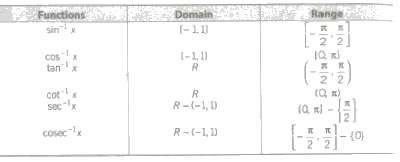
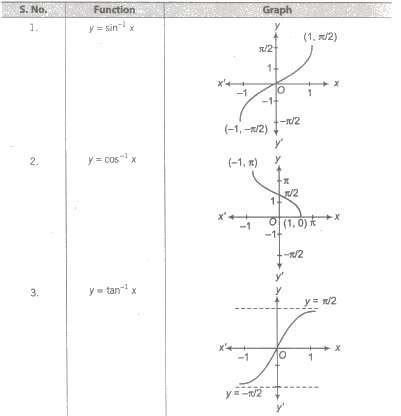
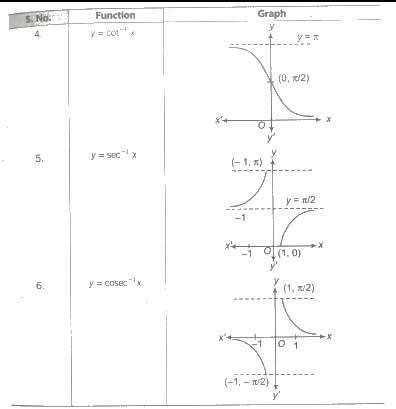
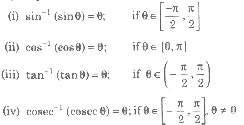

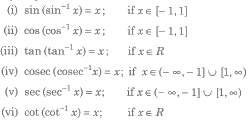
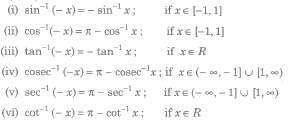
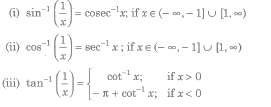

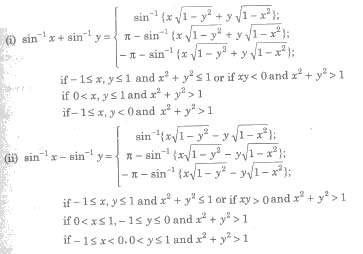
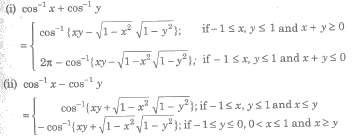

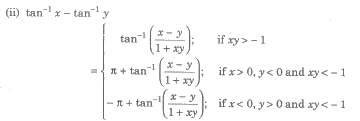
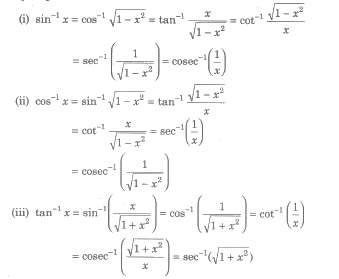
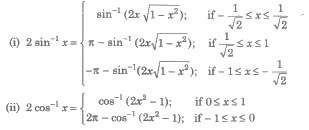
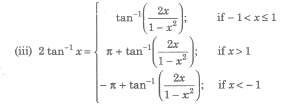
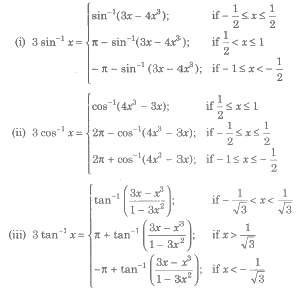
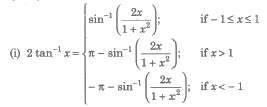

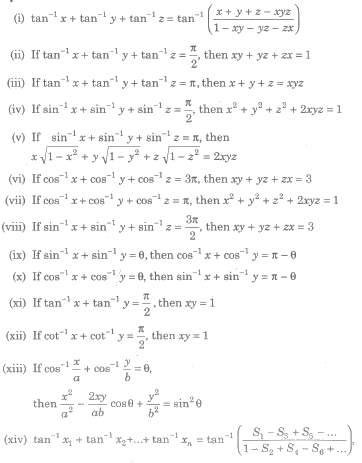
where Sk denotes the sum of the product of x1,x2,…xn takes k at a time.
A value of the unknown angle which satisfies the given equation, is called a solution or root of the equation.
The trigonometric equation may have infinite number of solutions.
(i) Principal Solution – The least value of unknown angle which satisfies the given equation, is called a principal solution of trigonometric equation.
(ii) General Solution – We know that, trigonometric function are periodic and solution of trigonometric equations can be generalised with the help of the periodicity of the trigonometric functions.
The solution consisting of all possible solutions of a trigonometric equation is called its general solution.

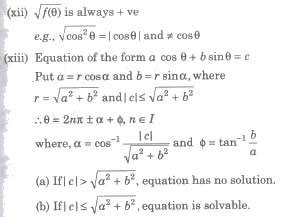
(i) While solving an equation, we have to square it, sometimes the resulting roots does not satisfy the original equation.
(ii) Do not cancel common factors involving the unknown angle on LHS and RHS.Because it may be the solution of given equation.
(iii) (a) Equation involving sec θ or tan θ can never be a solution of the form (2n + 1) π / 2.
(b) Equation involving coseca or cote can never be a solution of the form θ = nπ.
Copyright @ ncerthelp.com A free educational website for CBSE, ICSE and UP board.